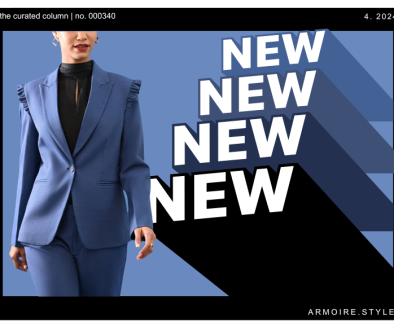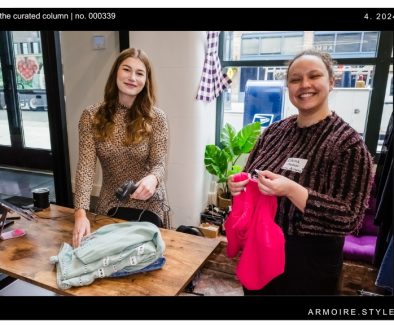Brick and Mortar Isn’t a Losing Battle, But an Opportunity to Innovate
By Chief Boss Lady, Ambika Singh
As of August, the number of recorded US retailers closing in 2019 has far exceeded the recorded number for all of 2018. 2019 is expected to see a record-breaking 12,000 store closures across the US. Along with it, the term “Brick and Mortar” increasingly becomes met with a tinge of impending doom. As consumers replace traditional in-store shopping habits with the ease and convenience of online shopping, brick and mortar is struggling to keep up.

To keep physical storefronts strong, retailers have to change their approach. E-commerce has changed the way consumers shop, and to survive physical retail needs to change to match these consumer habits. Trying to keep up with e-commerce is an impossible goal. Online shopping offers more styles, sizes, and colors than can fit in a 5,000 square foot retail space. In contrast to pages and pages of garments in all sizes and color options, physical shopping feels like a scavenger hunt. Endless racks of clothing and mazes of people make it a chore just to find a simple blazer in the right size. As consumers, we’d rather sit at home, scroll through a hundred items to find what we want, and then try garments on in the comfort of our own home. Between the two options, online shopping feels like the obvious choice. It may seem like physical retail doesn’t stand a chance, but brick and mortar is an opportunity to rethink how physical retail works.
Physical retail shouldn’t try to compete with online shopping, but create a different draw altogether. The consumer shift towards the instinct to order online, whether it’s clothes, groceries, or anything in between, has seemingly negated the need for physical retail. If retailers are only trying to meet the same demand as e-commerce, physical retail is always going to lose out. Instead of trying to compete with e-commerce’s ability to provide every single option, brick and mortar needs to find a new purpose.
Rather than trying to improve the same storefront model, we need to rethink the model altogether. Retail is still a viable avenue for many businesses, as proven by companies such as Glossier, Apple, and Everlane, who continue to successfully attract foot traffic. Why do consumers keep coming to these stores, and how can we use those elements to create a space consumers actually want to be in? If retailers can capitalize on the elements that still draw consumers to brick and mortar, they can create a need for physical retail space independent of e-commerce.

The draw of in-store experience is what made Glossier’s Seattle Pop-Up maintain lines around the block day after day this summer. It’s not rational to wait in line for an hour when we could order the same products online in four minutes, but the experience— walls covered in flowers, employees in pink jumpsuits, and chutes that deliver your product as if by magic— is what drew consumers to the store. Stores should capitalize on the excitement, curiosity, and opportunities that come with storefronts in order to provide an experience that compliments their service.
At Armoire, we’ve tackled this problem by creating a boutique space. Our boutique offers members a way to come in and browse new styles, swap their rented items, or meet with a stylist for a 1:1 appointment. We don’t aim to show members every single possible garment in our inventory, but show them the garments we think they would like and would fit. Consumers aren’t losing anything by not seeing thousands of items they wouldn’t wear. We’ve abandoned the traditional shopping model completely, and replaced it with a more convenient way to help consumers find what they want. Picking their case online is more convenient for their day-to-day use, but coming into the boutique provides a more convenient option for special events, personal help, and a human touch. The two services compliment each other. Our brick and mortar model doesn’t aim to compete with traditional online shopping, but provides a draw that e-commerce can’t. We’ve built a viable brick and mortar space (as evidenced by a 20% profit margin generated by our boutique). Here’s how we’re doing it:
Shift the Mentality Around Consumption
While our boutique parallels the setup of traditional in-store shopping (racks of different sizes, dressing rooms, etc), we’ve created a major shift in the approach members take to browsing— eliminating price consideration. When we shop, we tend to think about value as denominated in dollars. Instead of prioritizing what we really want, we prioritize utility and cost. What’s going to give us the most value for its price? How many times will we have to wear something to make it worth purchasing? We get caught up in alluring deals with a sense of urgency, and end up buying items we wouldn’t have spent money on without an enticing buy-one-get-one-half-off sale. Because we prioritize price, we end up with cheaper, less desirable items, instead of what we really want.

In our boutique, price is removed from the equation entirely. Members don’t even have to take out a credit card. Rather than thinking about how they can find the best deal, members can prioritize the things they actually want to wear. Without price as our indication of value, users can pick what they really want. Tagless browsing creates a more satisfactory experience. Price-free “shopping” completely disrupts our consumption habits. Our boutique experience provides a shift in the mentality we adopt while shopping, building a more authentic and beneficial experience for users than traditional in-store shopping.
Incorporate an Authentic Human Component
One of the biggest draws to our boutique is the option for members to come in for 1:1 styling appointments. Our website allows members to choose from items specially curated for them, but our boutique offers a different experience entirely. Styling appointments take the pressure off choosing styles for important upcoming events without input, and the ability to try on more items than what’s in a case. Physical retail space puts a human component into a virtual experience, which consumers still desire in retail. When experiences are more personal, people are more invested.

We even found that members who come to the boutique have a 3x higher retention rate than those who don’t. Brick and mortar gives the opportunity to provide a personal connection that e-commerce can’t, an attribute which greatly enhances consumer experiences. Our online presence and boutique space don’t substitute each other, but instead compliment. By using this human factor in conjunction with an online tool, we created an experience where people want to come to the boutique.
Focus on Community

With the boutique, we’ve also created a space that e-commerce can’t replace, reliant on community. Members can come in for networking events, career development panels, and style parties with her friends. Through brick and mortar, we’re able to build a stronger community of members than we would be able to online. The boutique allows us to form meaningful connections with our members. The different experience, and strong community that brick and mortar allows us to foster is what keeps driving members to our storefront. Not only does the physical space give us an opportunity to foster relationships with our members, but with the local businesses around us. By being physically tied to a community, we are able to showcase and partner with other businesses and organizations, such as Womxn in Music, Om Mama, and the Seattle Bank. Having a physical location builds stronger community for businesses and consumers alike.
Trying to compete with online retail is a dead end, but also an unnecessary goal. Trying to stock every size and color option in storefronts is impossible, which is why consumers turn to online as their first step. Rather, as brick and mortar retailers, we should take this as an opportunity to make our brand experience stand out. Armoire is a digital service first, but we use brick and mortar as a key component of our strategy for a reason. Brick and mortar is still a viable option, as proven by our own boutique generating a 20% profit margin. More than money, our space is an opportunity to show what makes us unique, and to engage with the people who support us. What makes your company unique, and how can you showcase that in a way customers will value? Brick and mortar isn’t a losing battle, but an opportunity to innovate.




